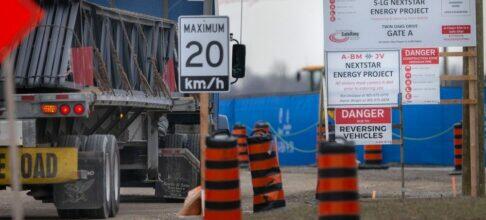When the jobsite feels chaotic and disorganized, you can probably pin the blame on this likely culprit —miscommunication.
Failure to communicate can ultimately lead to serious jobsite accidents, project rework, and workforce challenges. The construction industry has established processes for communication over the years, but the various groups involved on a construction site come and go at different times and often have different priorities.
Effective communication is critical for collaborative work. According to Andrew Dainty’s Communication in Construction book, high levels of communication are needed to, achieve coordinated results, manage activity, motivate your workers and understand what needs to be done.
As a contractor, if you are not meeting these goals, you need to determine where communication is breaking down and potentially endangering the project.
Here are some common communication mishaps found on jobsites:
Delayed Notifications or Follow-up
If you don’t tell workers about an issue before it happens, they can’t be proactive. If you say you will look into something and never follow up, workers may stop coming to you.
Communication requires a level of trust; if you state you will take action and fail to do so, you are breaking that trust. You will lose an important element of the line of communication within your group and on the jobsite, which could lead to unreported conditions or ad hoc solutions created outside of the process.
If you don’t tell the site supervisor about the delay in transport for the remaining steel panels, the supervisor can’t reschedule workers to come at another time or work on another area. Everyone ends up waiting around and wasting time.
If the crane operator says people are ignoring the “no-walk” signs and you say you will look into it, someone can get hurt if you don’t follow up on the issue quickly. The crane operator may then decide that it isn’t worth asking you and report you to OSHA.
Technological Problems
While email, voicemail, and texting have simplified communications in some ways, these activities have caused communications to become fragmented in others. Private group communications also limit access to information and create silos of activity and information. One group has one mandate, and that puts another out of the loop. Soon collaboration falls apart and everyone works in silos, isolated from others.
To combat this, everyone should have real time access to documents where comments and revisions can be made and viewed by all. There must be one streamlined method of communication that is updated with project information in real time for all to see or these one-off methods of communications become more harmful than helpful to project success.
Your team is disengaged
Can you tell how many workers are actually listening during those daily field crew meetings? If you don’t immediately capture their attention, they disengage until it appears you are finished. Why might that be?
- They are in a hurry to complete a task
- They are confused but don’t want to ask questions
- You don’t give them a chance to ask questions
- They don’t feel comfortable to speak up about jobsite issues
- They just can’t hear over the jobsite noise
- There is a personal conflict
When Communication Fails
Employees may misread management decisions or react differently than expected. Managers may not understand employee needs. Both result in lower performance and higher worker turnover.
Some misunderstandings result in rework, which could range from simply replacing a few lights to breaking up an entire concrete slab and performing a new pour.
Other miscommunication can result in safety violations, accidents, injuries, or death. A worker at height did not learn how to use his harness correctly because he did not understand the trainer. Another misses the message about an active crane area. There are hundreds of ways to get hurt or damage equipment on a construction site if you do not hear the reasons for why you need to be careful.
Solving the Communication Problem
Thefirst stepin resolving communication problems is recognizing you have them in the first place.Ask for feedbackabout what you communicated, especially in face-to-face situations. Have the other person repeat back to you what you said to make sure the information was received correctly. Pay attention to the other person’s reactions and look for indications that they are listening.
Automate your communications whenever possible to provide real time updates via text or voicemail. Utilize software with version control histories during drawing revisions, and logs of document access and changes. Other good areas for auto-notifications include:
- Changes in or expectations of severe weather.
- Delays in shipping and transport of expected materials.
- Scheduling changes due to the unavailability of a particular sub that day.
Customize your notifications to go to the right people, depending on the message. Limit them to those who need to know. If workers receive too many notifications, they may start to ignore them.
The best option for eliminating your communication gaps is to invest in a construction software platform with a dashboard feature to monitor the status of a variety of areas on a single screen. If needed, you can dig into any details and clarify instructions with the people involved.
A jobsite is no place for misunderstandings—too much is at stake. Clear communication not only reduces rework and mitigates accidents, it can also significantly increase the efficiency of the construction process.
Figure out your communication failures, learn from them, and devise a way to keep everyone in the loop on everything from changes in deliveries to how the weather will impact the day’s schedule.
Better communication also builds better teams, and enhances worker retention and attitudes at the jobsite.
If you liked this article, here are a few eBooks, webinars, and case studies you may enjoy:
How Construction Technology Saves Time, Money, and Jobs
3 Steps to Construction Collaboration & Productivity
Scott Construction Study














